The role of microcontrollers and microprocessors in the life of a design engineer is immense. The microcontroller provides integrated solutions for engineers incorporating multiple peripherals along with the much-needed processor in a small-sized module.
You might have one lying in your electronics spare parts box. There are several differences between microcontrollers and microprocessors which keep them apart among various applications.
Let’s put them to good use with some interesting microcontroller projects. This list of the top 15+ microcontroller project ideas might come in handy if you plan on something.
(Click on the project name you want to know more about)
Microcontroller Projects Ideas
1. ATmega16A Based GPS Receiver
A global positioning system (GPS) receiver uses information from satellites to get precise geographical locations. It not only gives information about the location but also information like time, date, height, and speed. The project here demonstrates how to get a location (latitude and longitude), time, date, speed, and course-angle information using a GPS receiver. It uses an 8-bit AVR microcontroller (MCU) ATmega16A to get data from the GPS receiver.
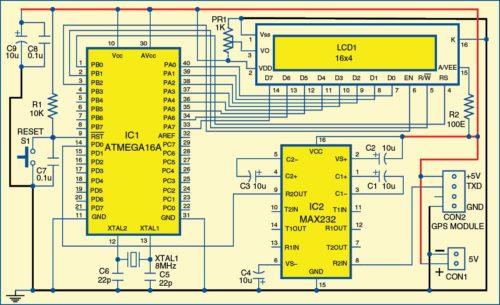
This project is available at ATmega16A Based GPS Receiver
2. GPS- and GSM-Based Vehicle Tracking System
Presented here is a GPS based vehicle tracking system based on the ATMega16 microcontroller using global positioning system (GPS) and global system for mobile communication (GSM).
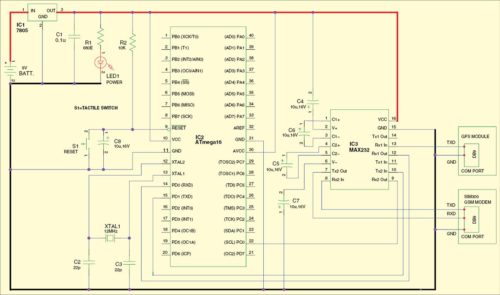
This project is available at GPS- and GSM-Based Vehicle Tracking System
3. Ultrasonic Radar Microcontroller Project
Radar systems have several defenses as well as civil applications. A transmitter transmits a beam toward the target. This is reflected by the target as an echo signal. The reflected signal is received by a receiver. This receiver processes the received signal and provides information about the presence of a target, distance, position (moving or stationary), or speed. This is displayed on a display unit.
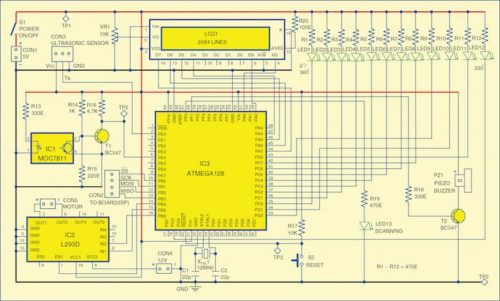
This project is available at Ultrasonic Radar
4. Arduino-Based GSM Home Security System
This project is designed using normally-closed reed switches connected to doors and windows and additional passive infrared (PIR) motion sensors to detect the movement of a burglar or an unwanted intruder in your home.
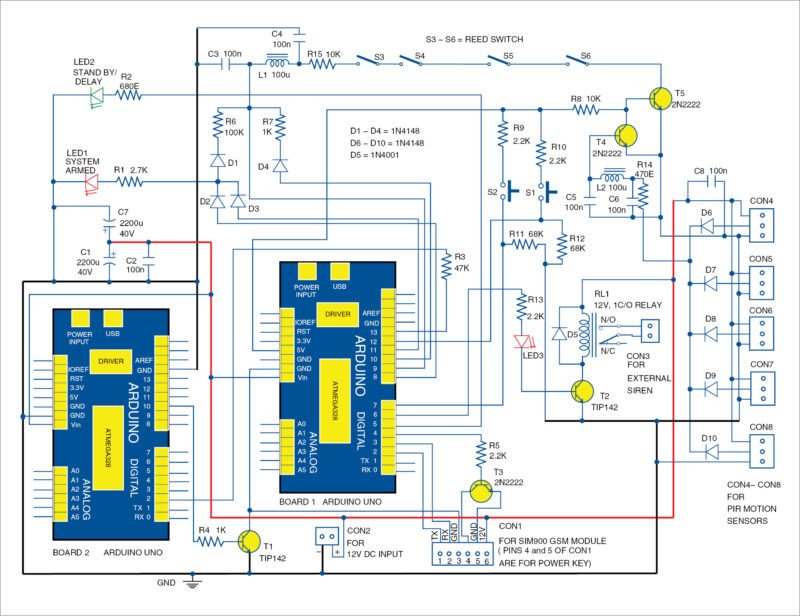
This project is available at Arduino Based GSM Home Security System
5. Electronic Card Lock-based Microcontroller Project
This next project presents a circuit for an electronic lock. A rectangular card is inserted like a CD, inside the disk drive. An appliance is switched on depending on the positions of the holes in the card. The electronic lock is connected to an access control system to prevent false operation of the system. It ensures the switching “ON” of only the selected appliance.
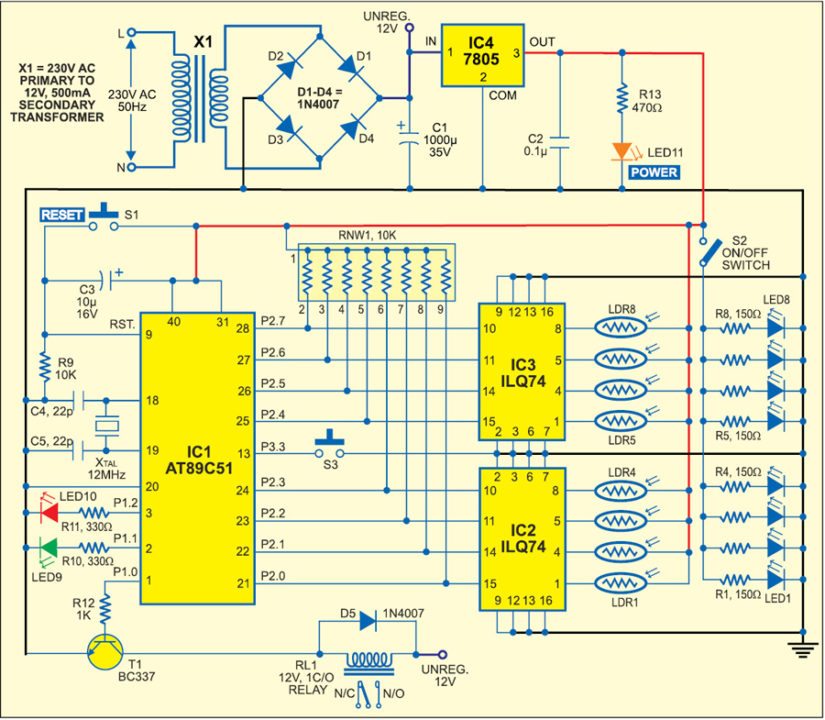
This project is available at Electronic Card Lock
6. Morse Code Encoder
Morse code is a method of transmitting textual information as a series of on-off tones, lights, or clicks. The International Morse Code encodes alphabets, numerals, and a small set of punctuation and procedural signals as standardized sequences of short and long signals called ‘dots’ and ‘dashes,’ respectively. The Morse code encoder presented here converts texts, numbers, and special characters into Morse code as an audible output on a piezo buzzer.
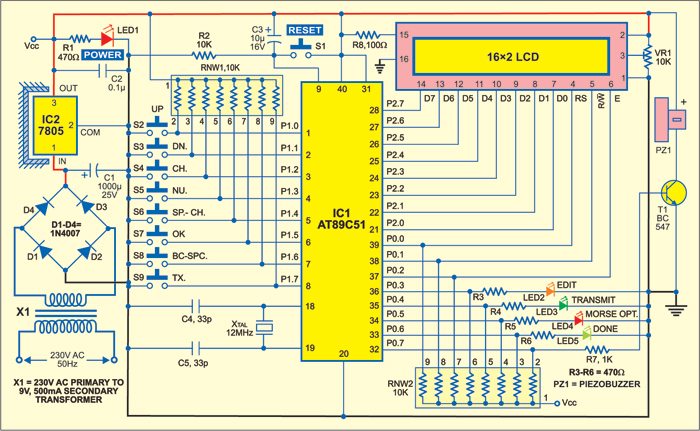
This project is available at the Morse code encoder
7. Smart Receptionist With Smartlock System
Presented here is a security system that lets you see a visitor while your main office door is locked. If you are in the middle of a meeting in a conference room and there is a visitor at the door, this system will send a notification to your smartphone with a photo of the visitor as an email. If you approve, you either use your mobile or PC to unlock the front door using a Web browser.
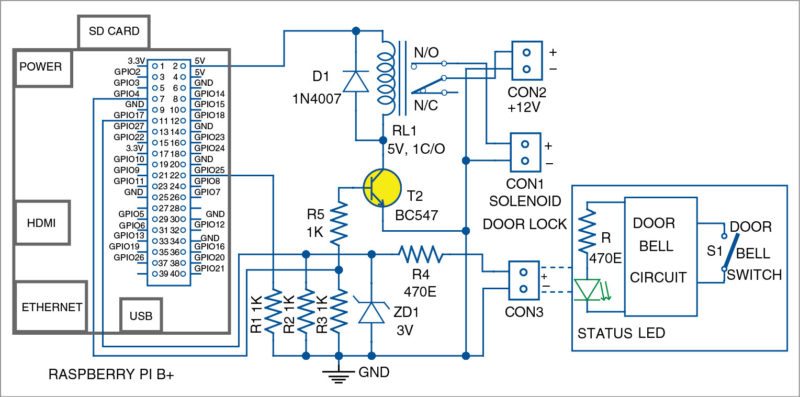
This project is available at Smart Receptionist With Smartlock System
8. Virtual Telepresence Robot Using Raspberry Pi
This robot with a camera is placed in a remote location to capture the environment in visual form using Raspberry Pi (RPi). The captured visuals are displayed on the user’s virtual reality (VR) headset.
This project is available at: Virtual Telepresence Robot Using Raspberry Pi
9. Soccer Robot
This soccer robot can move forward, reverse, forward-left, forward-right, reverse-left, and reverse-right with the help of an Android phone. The speed of its movement is controlled by the angle of rotation of the phone. The robot also kicks a ball when the phone is shaken.
This project is available at Soccer Robot
10. Restaurant Menu Ordering System
In these modern days, the number of restaurants is increasing. They also require very fast processing for serving food to the customers. With the increasing number of customers, it would require more manpower, since the current situation has become hectic for the restaurants. Also, changes in the hard copy of the menu can’t happen.
This project is available at Restaurant menu ordering system
11. Fridge Temperature and Humidity Indicator
We can measure temperature and humidity inside the fridge using a normal temperature-humidity indicator but relative humidity (RH) could be inaccurate in that case. The moment the fridge door is opened, RH will shoot up due to ingress or egress of moisture in the surroundings. The small sniffer device, described in this project, picks up temperature and humidity from inside the fridge and transmits it on an RF link to a nearby receiver unit. The receiver unit checks the received code, identifies the right sniffer device and displays live temperature and humidity.
This project is available at Fridge Temperature and Humidity Indicator
12. Home Automation System
We are surrounded by smart devices capable of making decisions with minimal human intervention. Our home can also be made smart by implementing real-time home automation systems. It monitors parameters like power consumption and human presence. Home automation may include centralized control of electrical devices including lighting, appliances, and security. Presented here is a touch-control-based home automation system that can control up to six electrical devices. It also has a separate keyboard interface module for troubleshooting and system settings.
This project is available at Home Automation System
13. LPG Leakage Detector
Presented here is a low-cost circuit for an LPG detector that you can build easily. The main objective of the circuit is to detect LPG leakage anywhere. It is very easy to find gas leakages with this circuit, which uses low-cost components and an interactive way to adjust different sensitivity levels, based on customer needs, with the help of a pot meter.
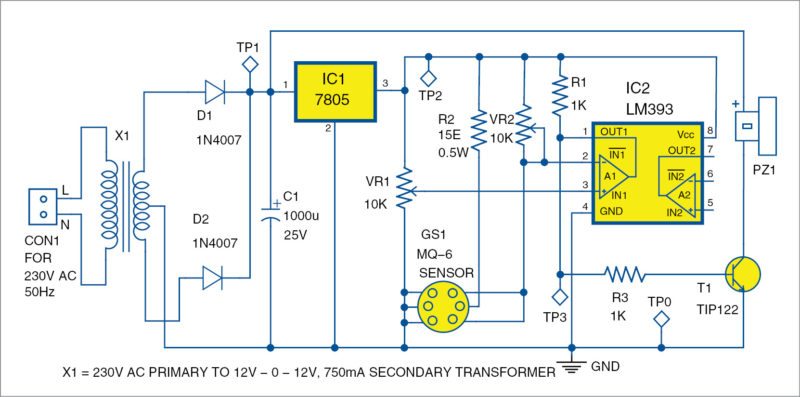
This project is available at LPG Leakage Detector
14. Solar Tracker System
Solar energy is coming up as a major source of energy. The need of the hour is renewable energy resources with cheap running costs. With the current systems for solar energy harvesting, we have high production only at fixed times mostly noon. This project proposes a dual-axis solar tracker system that increases productivity by a significant margin.
This project is available at Solar Tracker
15. Odometer-Based Microcontroller Project
This next project describes how to build a digital speedometer-cum-odometer for your motorbike. The circuit uses a microcontroller, an LCD display, and some commonly available components. It is a better alternative to the mechanical speedometer and even a beginner with minimal skill level can assemble it.
This project is available at DIY Odometer
16. Microcontroller-Based Tachometer
A tachometer is nothing but a simple electronic digital transducer. Normally, it is used for measuring the speed of a rotating shaft. The number of revolutions per minute (rpm) is valuable information for understanding any rotational system. This easy-to-make photoelectric tachometer measures the rpm of most shop-floor tools and many household machines without any mechanical or electrical interface.
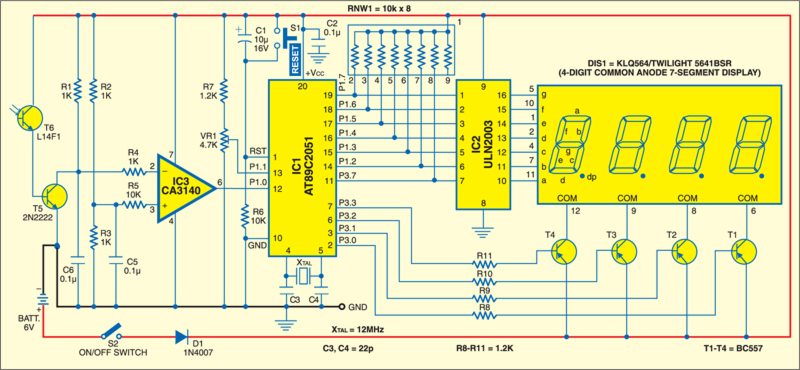
This project is available at the Microcontroller-Based Tachometer
This is in no way an exhaustive list. New ideas keep coming up from time to time. If you have any such microcontroller projects, we would welcome them through the contacts email.
The article was first published on 25 April 2017 and recently updated on August 2023.






